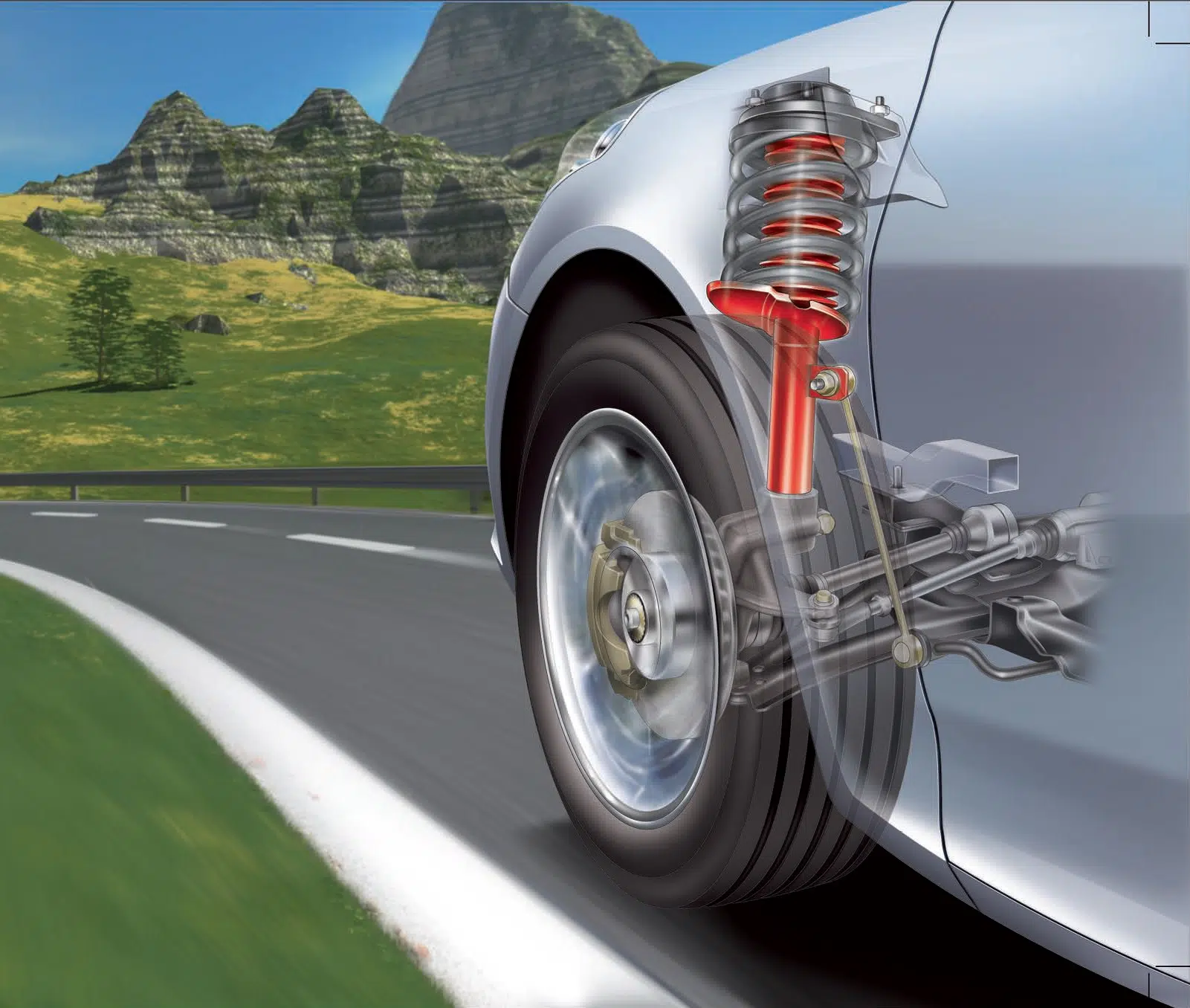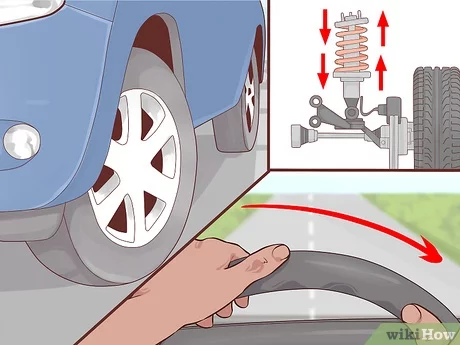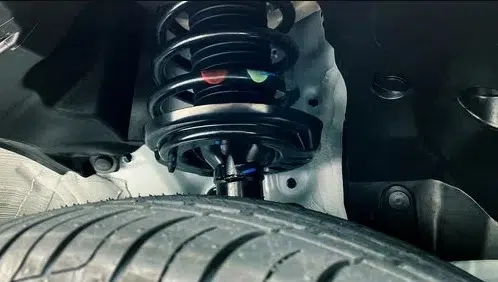Table of Contents
ALL YOU NEED TO KNOW ABOUT SHOCK ABSORBERS
For many people, shock absorbers are simply used to make the vehicle bounce reasonably and that’s it.
However, a shock absorber does much more than that.
Did you know that this is one of the main components used for the proper functioning of your steering? Did you also know that shock absorbers require maintenance as well?
What is it for?

Shock absorbers are very important parts that improve the behavior of the vehicle on the road. They keep the wheels well on the ground when going over holes, valleys, speed bumps, etc.
They thus make the vehicle safer by allowing adequate and constant grip of the wheel with the ground. The shock absorbers also absorb the worst of the shocks on the road and thus prevent other mechanical parts from being damaged afterwards.
Another role associated with shock absorbers, and which is often overlooked, is that they help the vehicle to brake. Indeed, during braking, the weight of the vehicle is transferred to the front axle. A shock in good condition serves to slow the forward weight transfer and prevent the rear axle from being unloaded.
How to check shock absorbers?

One of the first things to check is tire wear.
If you see that your tire is worn unevenly, it may be a sign that you need to check your alignment or your shock.
Alternatively, you can lean on the corner of the front bumper and watch it move. If it bounces more than once, chances are the shocks are worn out.
Test all corners of the vehicle to check all shock absorbers. For the majority of vehicles, the shock absorbers are visible behind the wheels, inside the fenders.
Also check that there are no oil leaks under the suspension or on the shock absorber.
When to change shock absorbers?

Here are 5 easy-to-detect signs that indicate a shock absorber needs replacing.
- A bigger and bigger bouncing. If you see your vehicle bouncing more and more after going over a hole or bump, this is a sign that your shock absorbers are starting to fail.
- An extension of the braking distance. During braking, if you feel that the vehicle rocks forward more and more, this could also be a sign that the shock absorbers are starting to wear out.
- Abnormal backward tilt when accelerating when starting.
- An unusual tremor. When your steering wheel begins to vibrate as you increase speed, it may be a sign that you need to redo your steering and suspension alignment. However, it can also mean that a shock absorber is about to die.
- An oil leak at the level of the shock absorber body. It is always important to check for the presence of oil under the shock absorbers. However, it is necessary to check if the leak comes from the steering knuckle in which the shock absorber is fixed.
What are the recommendations?

On average, shock absorbers are changed every 80,000 km.
However, it is always better to rely on the recommendations of the manufacturer or those of a trusted garage.
In any case, keep in mind that it is important to have your shock absorbers checked regularly every 20,000 km or, at least, once a year.
You can contact Bumper to Bumper if you have any questions, insecurities or a mechanical need!



